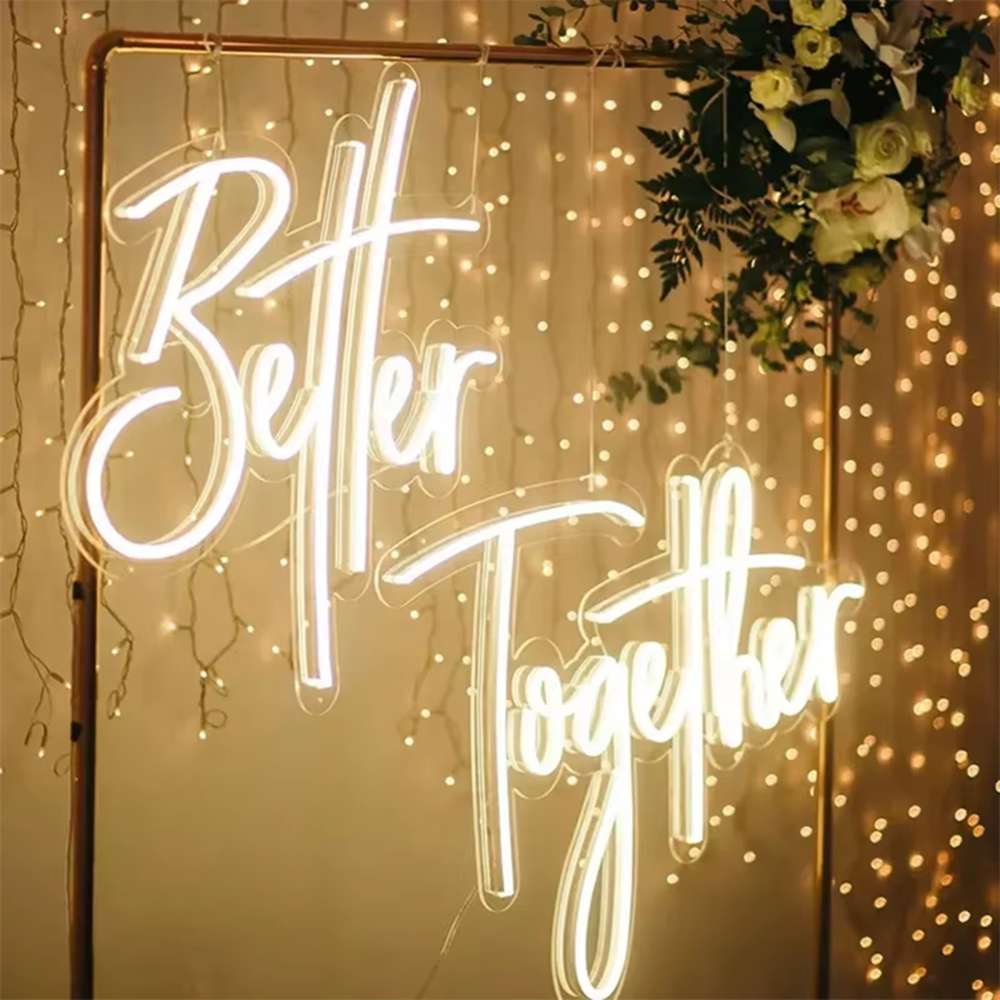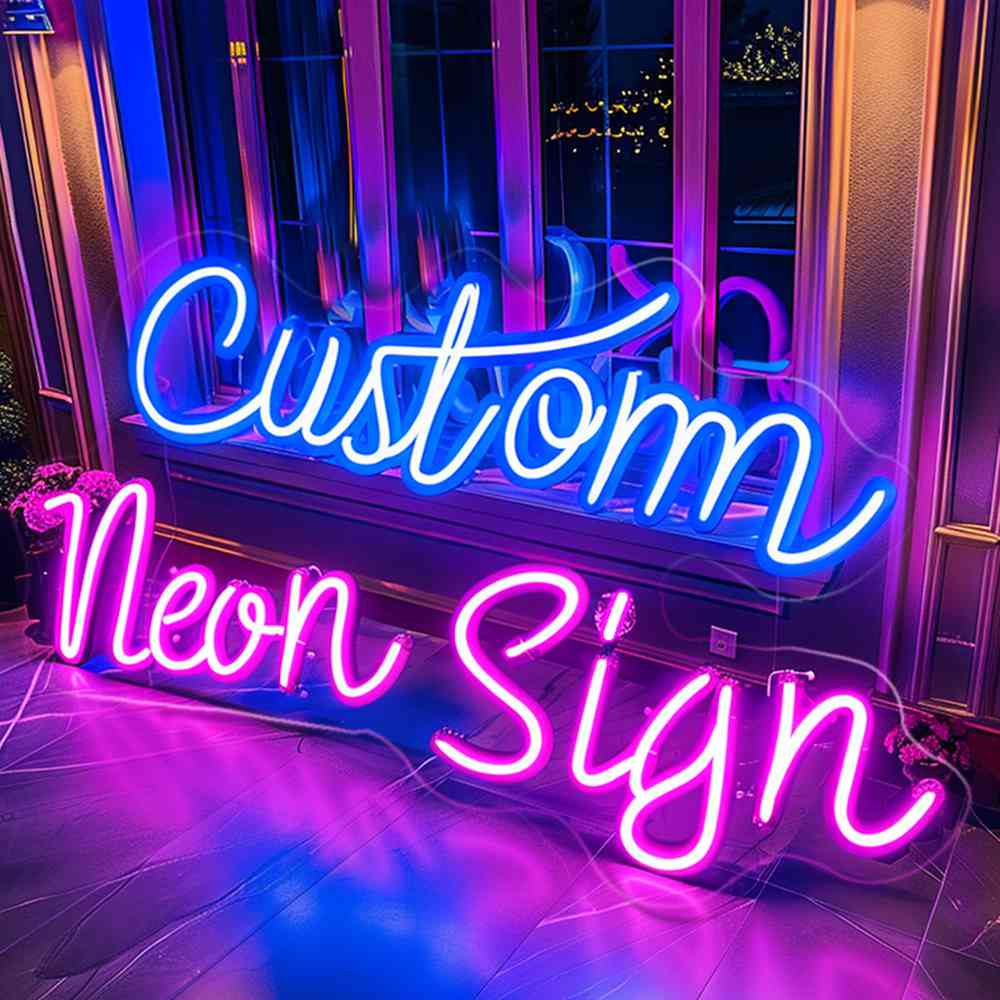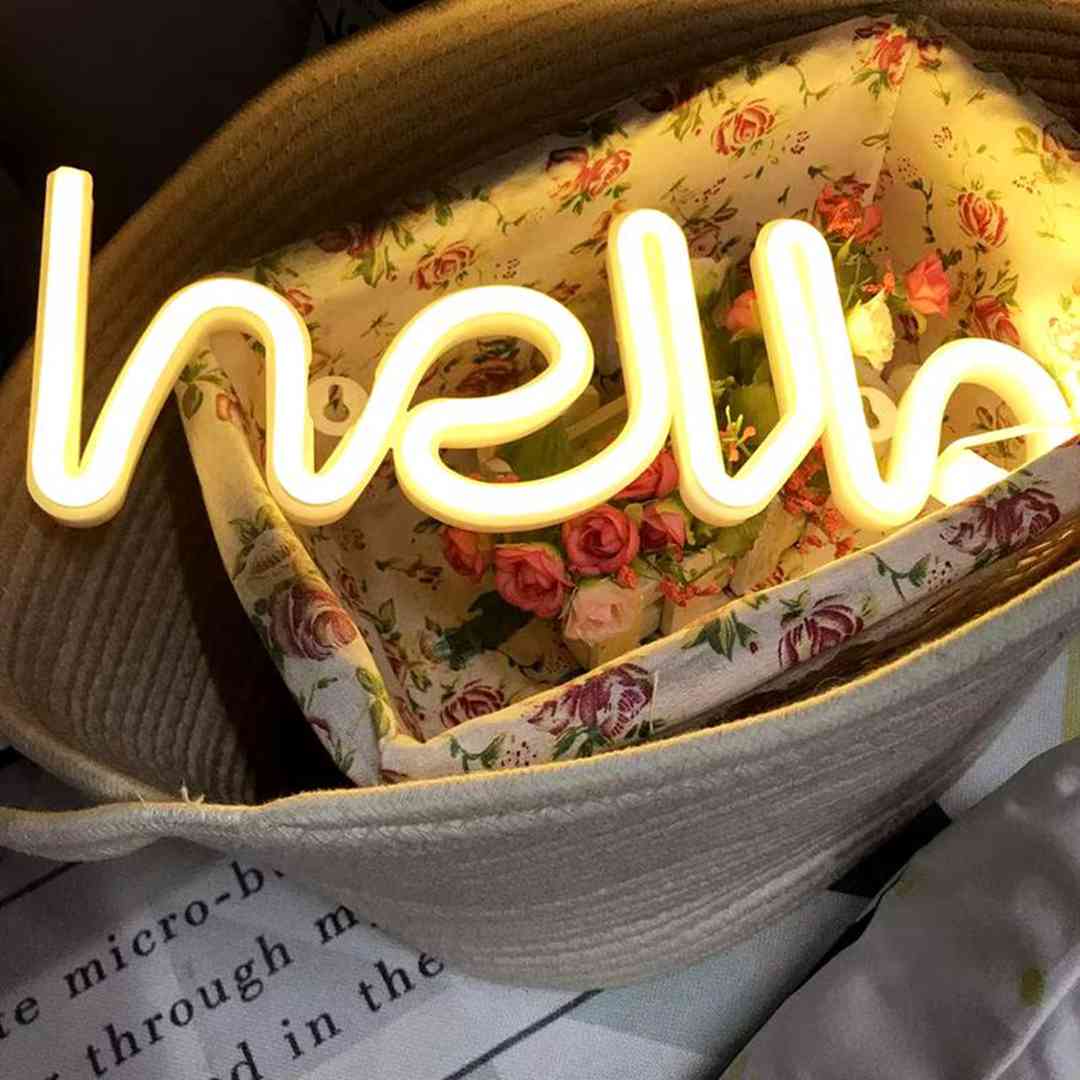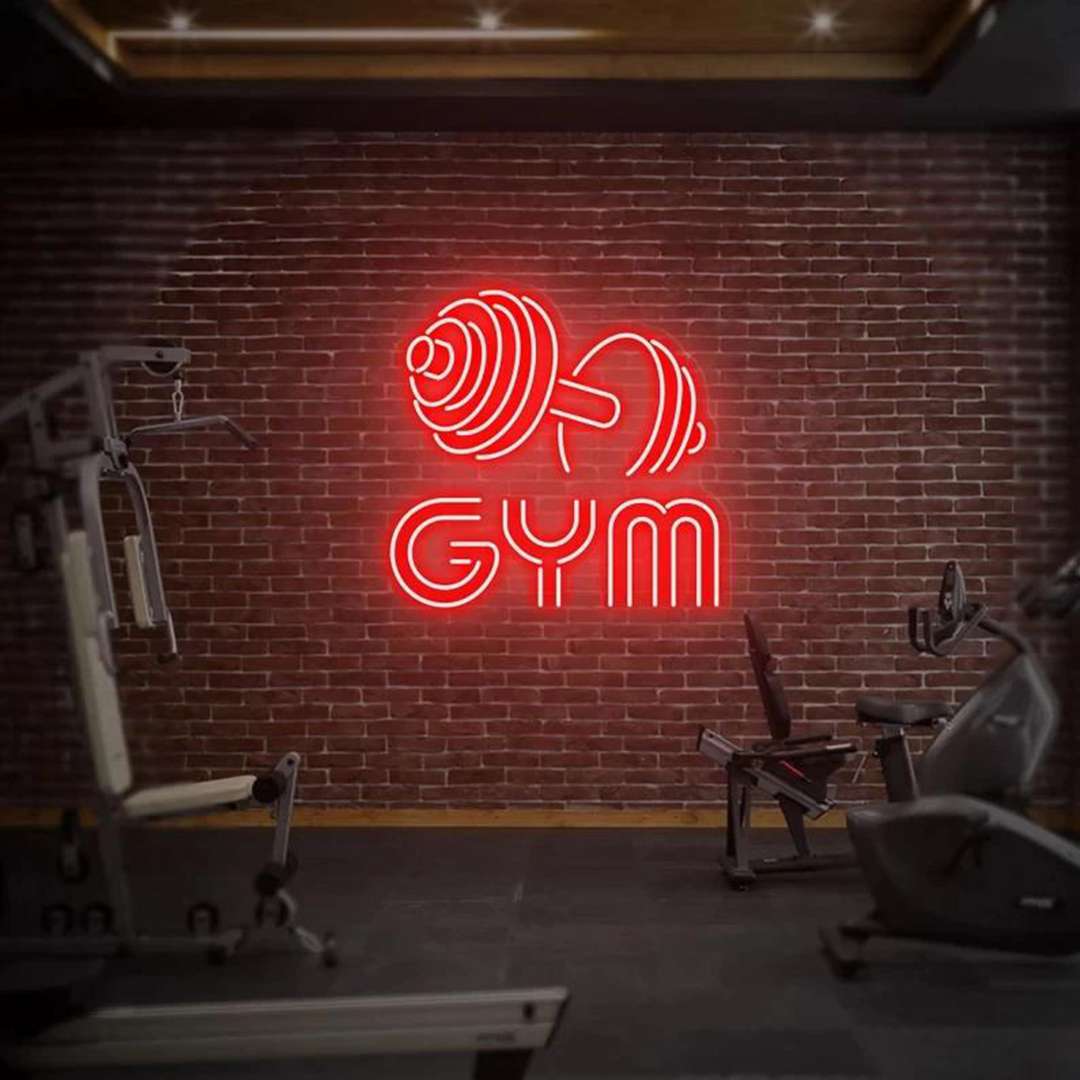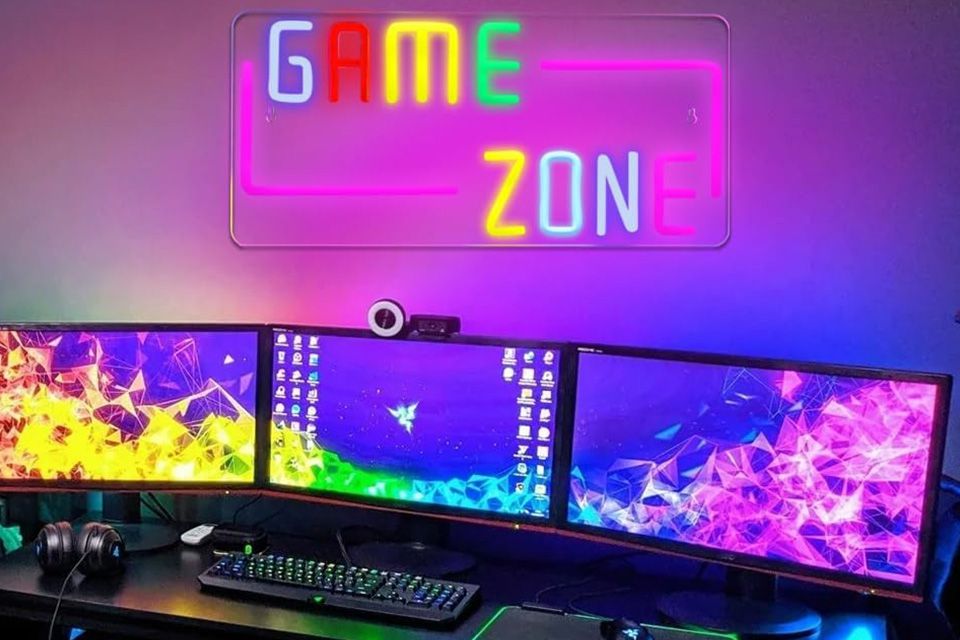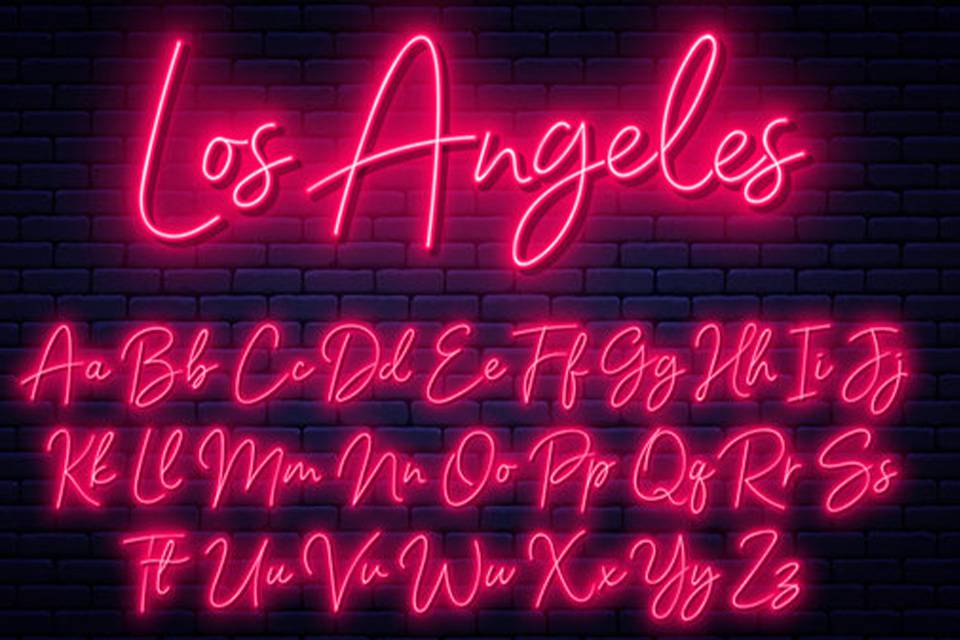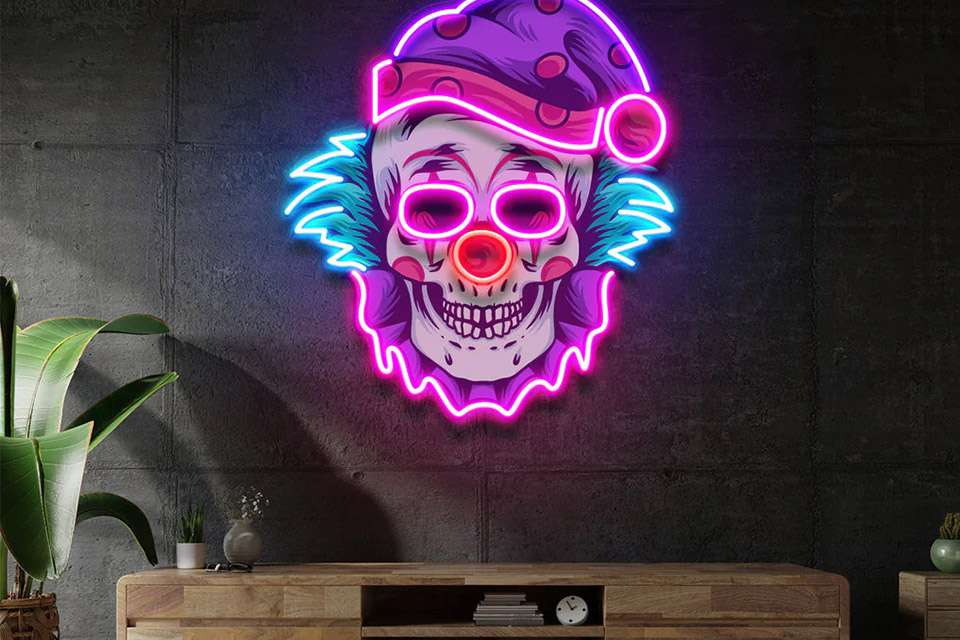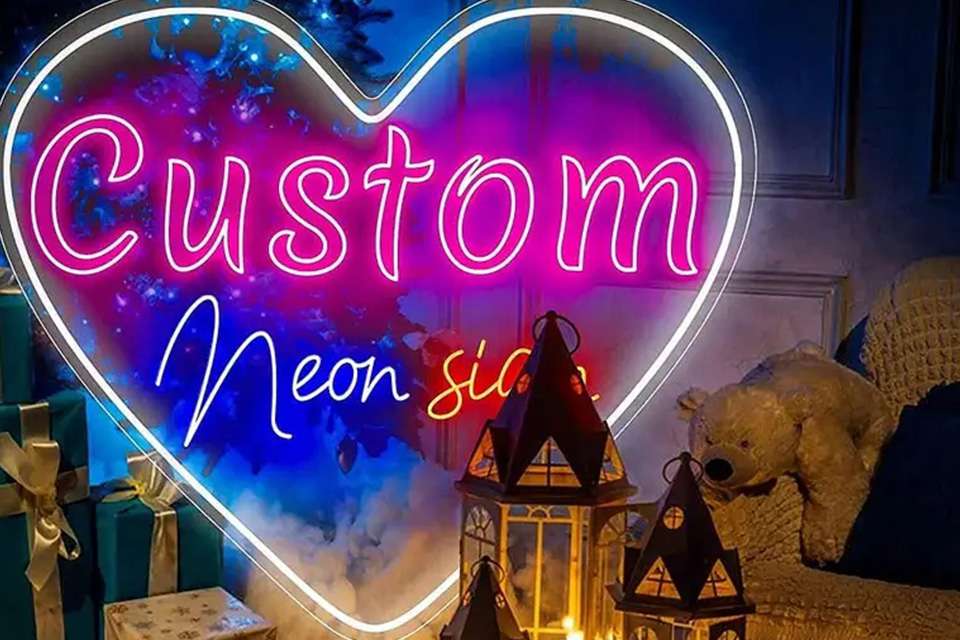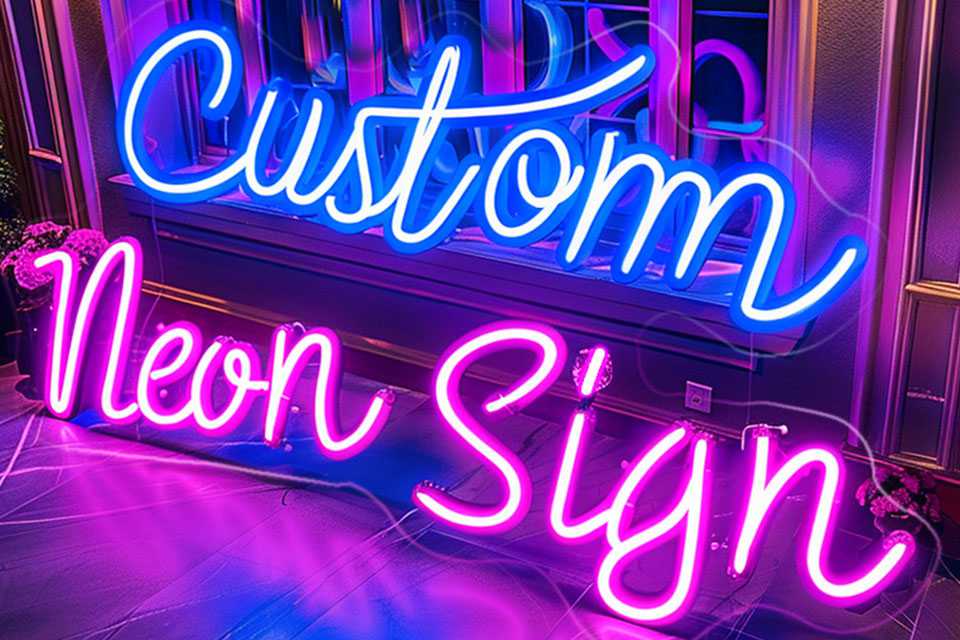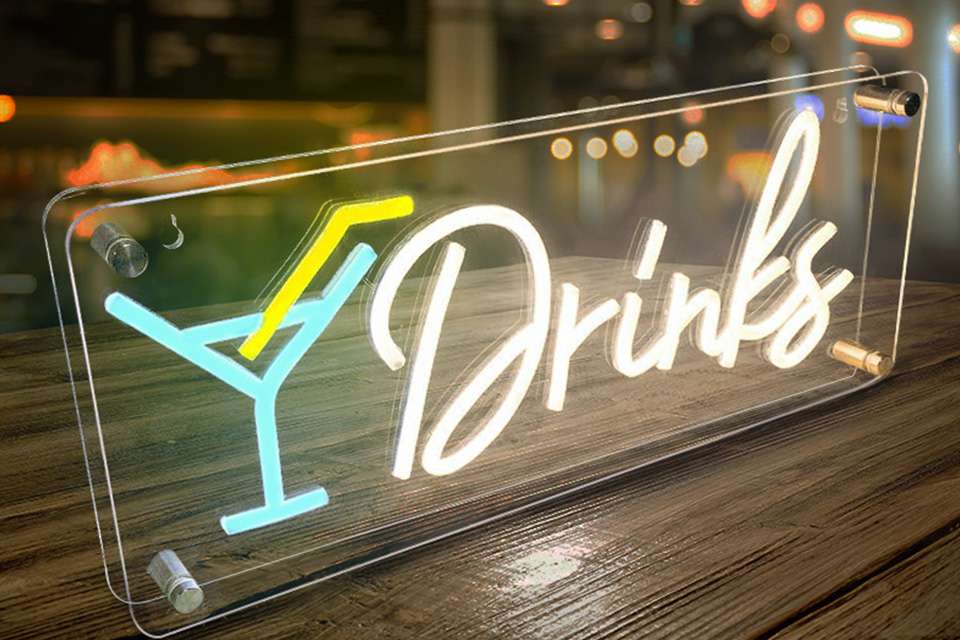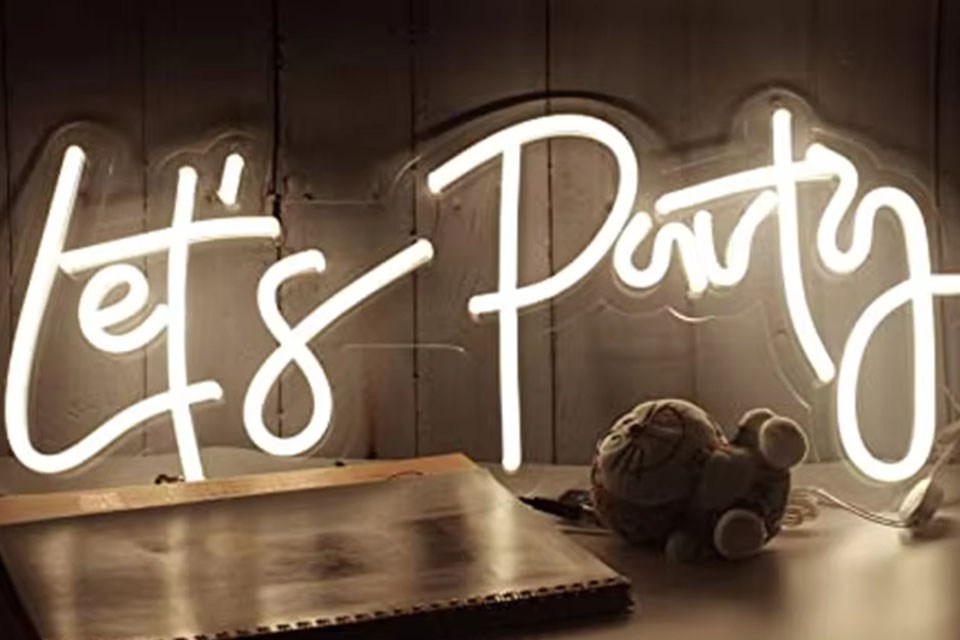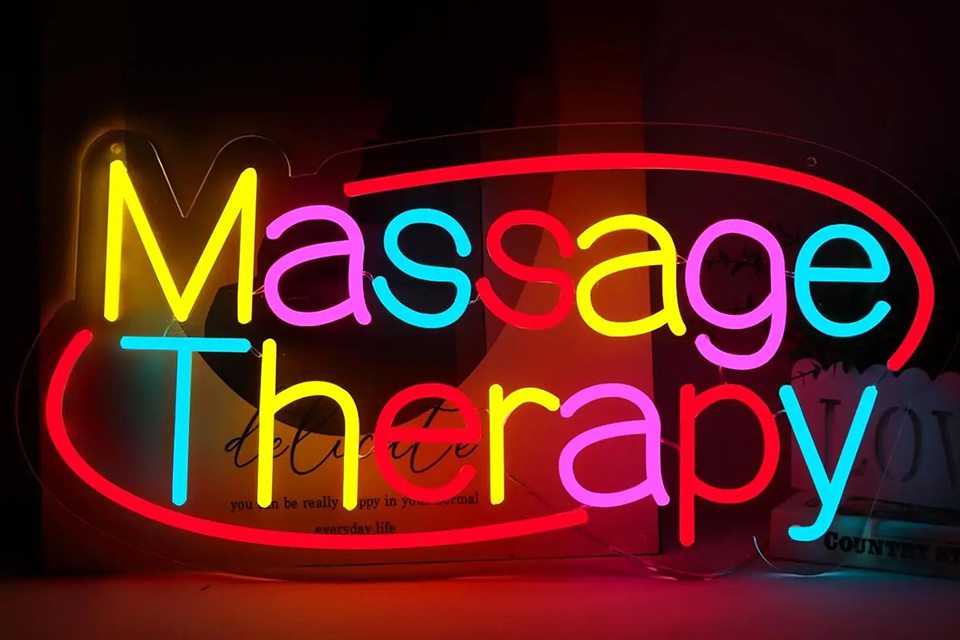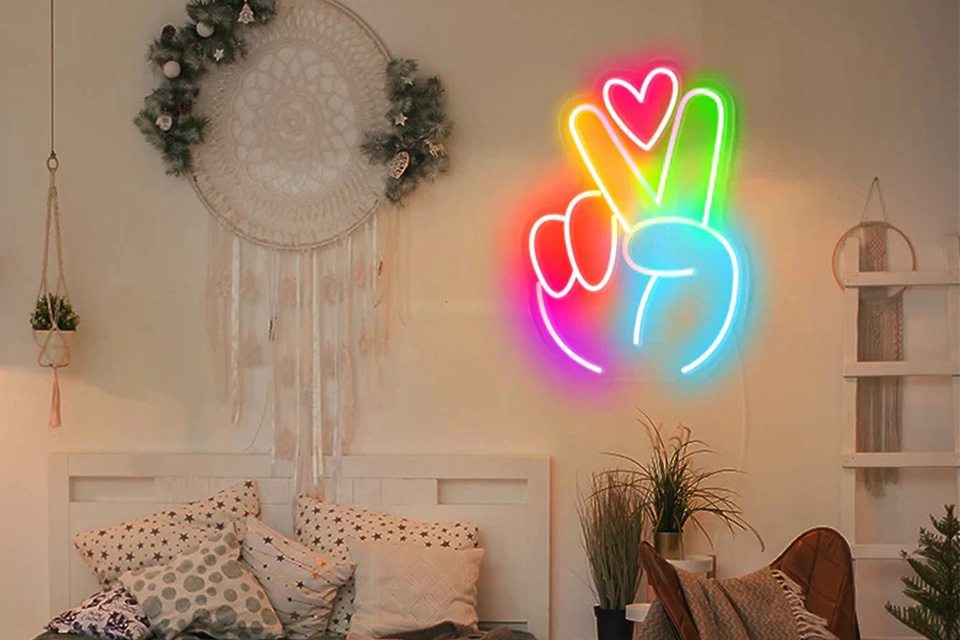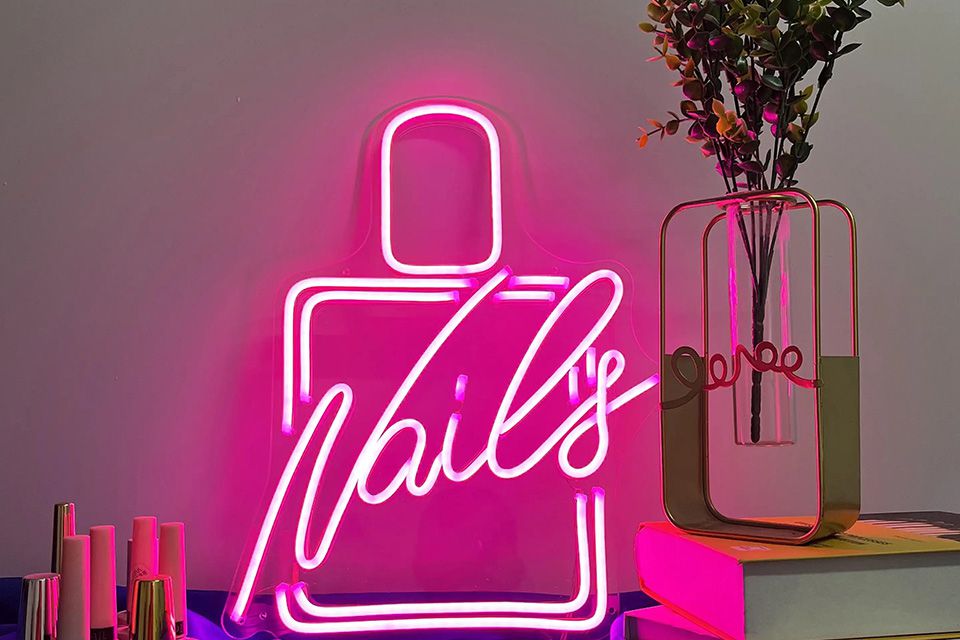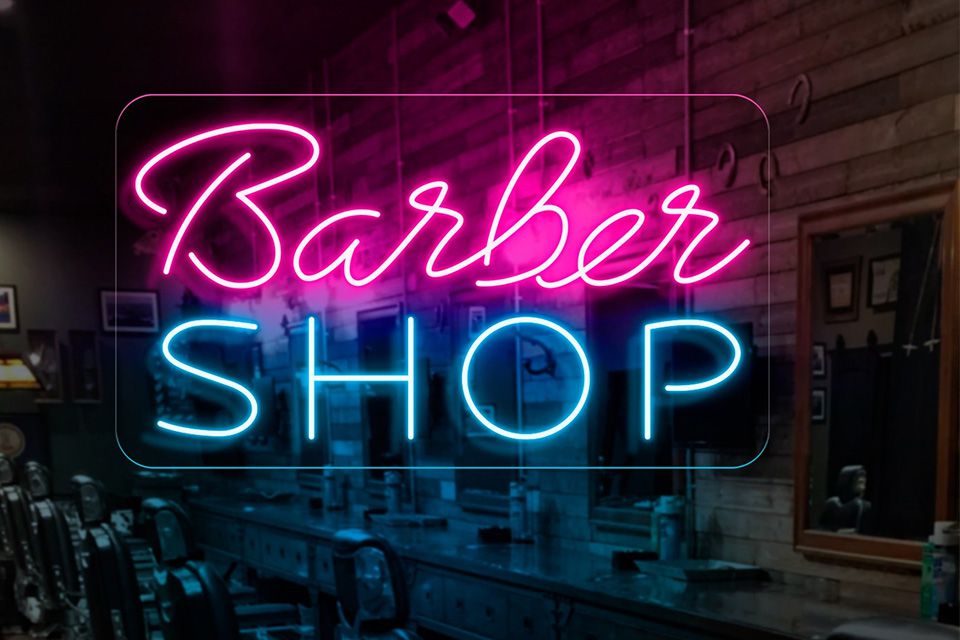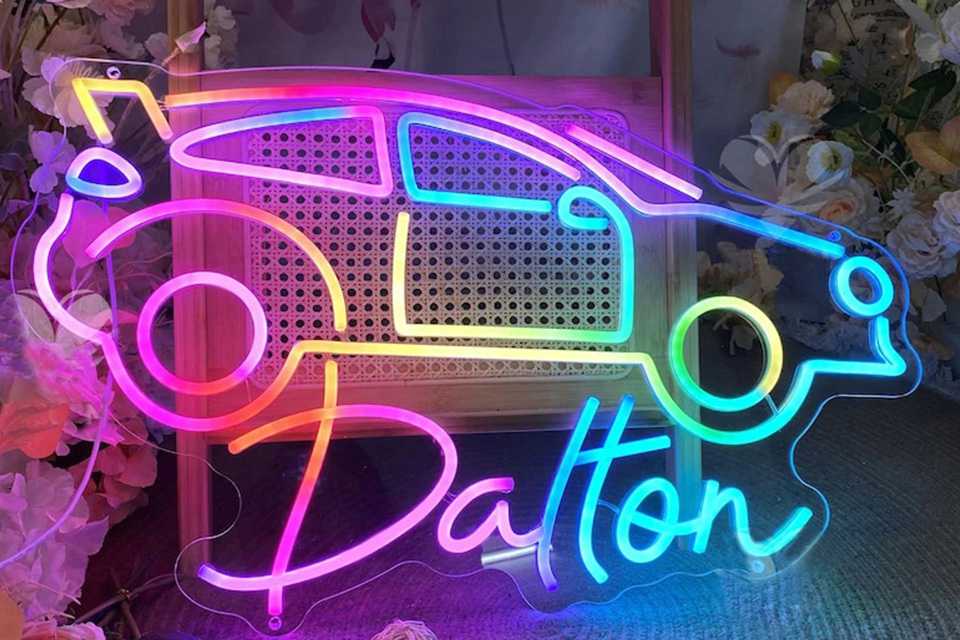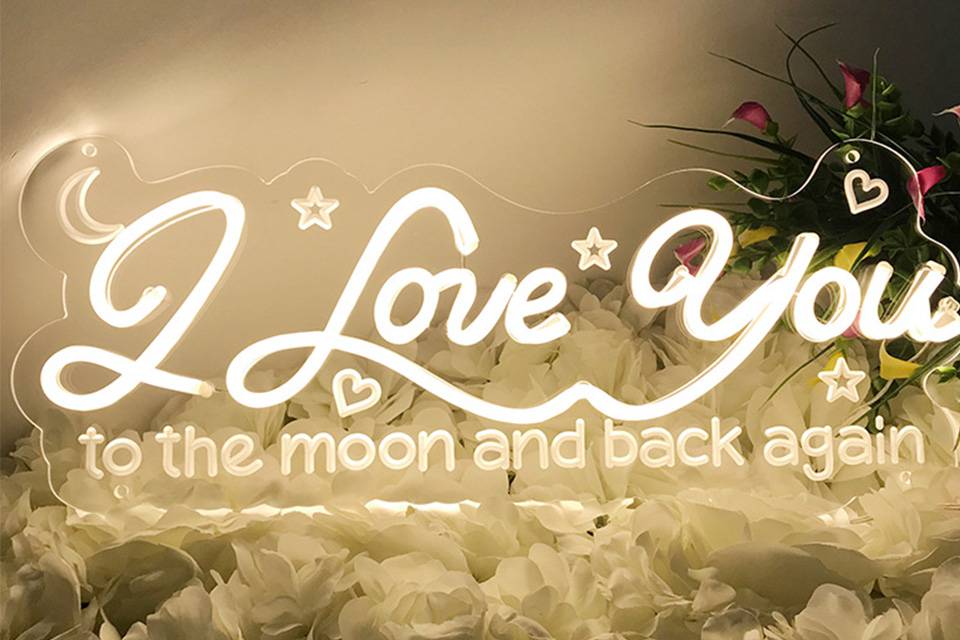
Zijn neonlichten brandgevaarlijk? Verminder het risico
Inhoudsopgave
This article explores the safety of neonlichten, addressing the common concern of whether they pose a fire hazard. We’ll examine how neon signs work, the potential risks associated with traditional glazen neon en modern LED neonlichten, and practical steps to minimize those risks. Whether you’re considering a neonlicht op maat for your business, home, or event, this article is worth reading. It provides a comprehensive guide to understanding neon safety, ensuring fire safety, and making informed decisions to enjoy the vibrant glow of neonlichten safely. By following these tips, you will be able to safely use your neonlicht for a long time.

How Do Neon Signs Work?
Neonlichten create their characteristic glow through the use of electricity and noble gases. Traditional neon signs are made of glass tubes that are bent into the desired shape or letters. These glazen buizen are then filled with neongas or a mixture of noble gases like neon, argon, krypton, and xenon, depending on the desired color. When a high-voltage electric current is applied to the electrodes at each end of the tube of a neon signde gas inside the tube ionizes and emits light. Neon signs also use other components, like transformers.
LED neonlichten, on the other hand, use light-emitting diodes (LEDs) encased in a flexible, durable material like PVC or silicone. These borden mimic the look of traditional neon, but they operate at much lower voltages and generate significantly less heat. LED neonlichten are generally much safer than traditional ones.
Are Neon Signs Dangerous?
Neon signs are generally safe when properly manufactured, installed, and maintained. However, like any electrical device, they can pose certain risks if not handled correctly. The primary hazard associated with traditionele neonlichten is the high voltage required to operate them, typically ranging from 2,000 to 15,000 volts. This high voltage can create a shock hazard if the bord is not properly insulated or if the wiring is damaged. This is why it is crucial to handle them with care.
Another potential concern with traditional glass neon signs is the use of gas, including small amounts of mercury in some cases. While the amount of mercury is typically very small, a kapot neonbord could release this toxic substance into the environment. LED neonlichten, on the other hand, do not contain mercury and operate at much lower voltages, making them generally safer than traditional neonlichten. They are also much more durable.
Can Neon Signs Cause a Fire?
Terwijl neonlichten are not inherently flammable, they can potentially cause a fire under certain circumstances. The main fire risk associated with neonlichten stems from the heat generated by the electrical components, particularly the transformer, and the potential for electrical malfunctions. If a neonlicht is improperly installed, if the wiring is damaged, or if the bord is placed too close to flammable materials, there is an increased risk of a fire breaking out. This is why it is important to follow all the safety instructions when installing and using a neonlicht.
Traditional neon signs, with their high voltage and heat generation, pose a greater potential fire hazard dan LED neonlichten. However, even LED neonlichten kan cause a fire if they are poorly manufactured, damaged, or improperly installed. It’s crucial to purchase neonlichten from reputable manufacturers and follow all safety guidelines to minimize the risk of fire. Also, make sure that your neon sign could not be easily damaged.
What are the Specific Fire Hazards Associated with Neon Signs?
Several factors can increase the risk of fire met neonlichten:
- Overheating: The transformer used to power a neonlicht can overheat if it’s not properly ventilated or if it’s overloaded. This is especially true for traditionele neonlichten. Signs operate at high voltages, so it is important to make sure that they are properly ventilated.
- Damaged Wiring: Frayed, cracked, or loose wiring can create electrical arcs or short circuits, which can generate enough heat to ignite nearby materials. This is why you should always check the wiring before using a neonlicht.
- Improper Installation: Een neonlicht too close to flammable materials, such as curtains, paper, or wood, can create a fire hazard. Neon sign may also be damaged if it is not properly installed.
- Manufacturing Defects: Poorly manufactured neonlichten may have faulty wiring, inadequate insulation, or other defects that increase the risk of fire. Neonlichten worden gemaakt to be safe, but defects can happen.
- Age and Deterioration: Older neonlichten, especially those with traditional glass, may be more prone to breakage, gas leaks, and electrical malfunctions, all of which can contribute to a fire hazard. Be especially careful when using old neonlichten.
| Hazard | Beschrijving |
|---|---|
| Overheating Transformer | Insufficient ventilation or overloading can cause the transformer to overheat. |
| Damaged Wiring | Frayed, cracked, or loose wires can lead to electrical arcs or short circuits. |
| Improper Installation | Placing the sign too close to flammable materials. |
| Manufacturing Defects | Faulty wiring, inadequate insulation, or other defects. |
| Age and Deterioration | Older signs may have broken glass, gas leaks, or electrical malfunctions. |

Are LED Neon Signs Safer than Traditional Glass Neon Signs?
LED neon signs are often considered safer than traditional glass neon signs om verschillende redenen. Ten eerste, LED neonlichten operate at much lower voltages, typically 12V or 24V, which significantly reduces the risk of electric shock. Secondly, LED neonlichten generate very little heat compared to traditionele neonlichten, minimizing the risk of overheating and fire. This makes them a much safer option for both indoor and outdoor use.
Ten derde, LED neonlichten are made with durable, shatter-resistant materials like PVC or silicone, rather than fragile glass tubes. This makes them less prone to breakage and eliminates the risk of gas leaks associated with glazen neon. Lastly, LED neonlichten do not contain mercury, a toxic heavy metal found in some traditionele neonlichten. Dit maakt aangepaste led neonlichten much safer than the traditional ones.
How to Reduce the Risk of Fire with Neon Signs?
You can take several steps to reduce the risk of fire when using neonlichten:
- Purchase from Reputable Manufacturers: Choose neonlichten from reputable manufacturers that adhere to safety standards and use high-quality components. These neon signs are designed to be as safe as possible.
- Proper Installation: Ensure that your neon sign is placed or installed by a qualified electrician, following the manufacturer’s instructions and local electrical codes. Make sure that the sign is installed correctly.
- Ventilation: Provide adequate ventilation around the neonlicht and its transformer to prevent overheating. Ensure that the sign is turned off when not needed.
- Clearance: Keep flammable materials away from the neonlicht, including curtains, paper, and other combustible items. Also, make sure that the sign is still in a good condition.
- Regular Inspection: Periodically inspect the neonlicht for any signs of damage, such as frayed wires, cracked tubing, or flickering lights. Check if the sign is still properly mounted.
- Avoid Overloading: Do not connect too many neonlichten to a single electrical circuit, as this can overload the circuit and increase the risk of fire.
- Turn Off When Not in Use: Turn off the neonlicht when it’s not needed, such as when the business is closed or when you’re not at home.
By following these safety measures, you can significantly reduce the risk of fire and enjoy your neonlicht safely.
What are the Regulations and Safety Standards for Neon Signs?
Neonlichten are subject to various regulations and safety standards designed to ensure their safe operation and minimize potential hazards. These standards may vary depending on your location, but they generally cover aspects such as electrical safety, fire safety, and proper installation. In the U.S., Underwriters Laboratories (UL) is a prominent organization that sets safety standards for electrical products, including neonlichten.
It’s essential to purchase neonlichten that comply with relevant safety standards and are certified by recognized testing laboratories. This ensures that the borden have undergone rigorous testing and meet minimum safety requirements. When installing a neonlicht, it’s crucial to follow local electrical codes and regulations, which may require permits or inspections. Always make sure that your neonlicht is compliant with all the regulations.
What to Do if a Neon Sign is Broken?
If a neon sign is broken, it’s important to take immediate precautions to ensure safety. First, turn off and unplug the neonlicht to prevent any electrical hazards. If the neonlicht is made of glass (glass neon sign), be extremely careful when handling the broken pieces, as they can be sharp and may contain small amounts of mercury. Signs typically contain very small amounts of mercury, but it is still important to be careful.
Wear gloves and use a brush and dustpan to carefully sweep up the broken glass. Place the broken pieces in a sealed container and dispose of them according to local regulations for hazardous waste. Do not vacuum the broken pieces, as this could spread mercury vapor. If an led neon sign is broken, there is no risk of mercury exposure, but it is still important to unplug it and dispose of it properly.
How to Properly Install and Maintain Neon Signs for Safety?
Proper installation and maintenance of neon signs are crucial for ensuring fire safety and preventing accidents. When installing neon signs, always follow the manufacturer’s instructions and local electrical codes. Ensure that the bord is securely mounted and that the wiring is properly connected and insulated. Signs are often installed by professionals, to ensure maximum safety.
Regular maintenance of neon signs can help identify and address potential hazards before they escalate. Periodically inspect the neonlicht for any signs of damage, such as frayed wires, cracked tubing, or flickering lichten. Clean the bord regularly with a soft, dry cloth to prevent dust buildup, which can contribute to overheating. Maintaining neon signs is crucial for ensuring their longevity and safety.
Frequently Asked Questions about Neon Sign Safety
Q: Are neon signs a fire hazard?
A: Neonlichten can pose a fire risk if not properly installed, maintained, or if they are damaged. However, LED neonlichten are generally safer than traditional glass neon signs due to their lower voltage and heat generation.
Q: Are neon signs safe to touch?
A: LED neonlichten are generally safe to touch because they operate at low voltages and generate minimal heat. Traditional neon signs, however, can become hot and should not be touched when turned on.
Q: Can neon signs be used outdoors?
A: Yes, both traditional en LED neonlichten can be used outdoors, but it’s essential to choose borden that are specifically designed for outdoor use and are weatherproof. Neonlichten voor buiten op maat are designed to withstand the elements.
Q: How long do neon signs last?
A: LED neonlichten typically last up to 50,000 hours or more, while traditional glass neon signs have an average lifespan of around 10,000 hours.
Q: Are neon signs harmful to the eyes?
A: No, neonlichten are not harmful to the eyes. De lights used in neonlichten are not harmful.
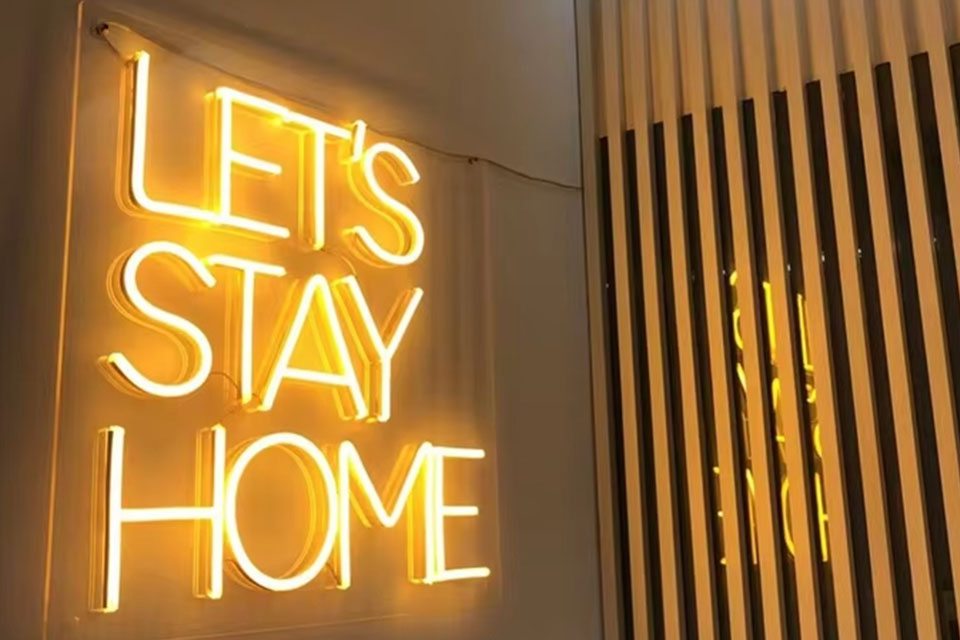
Samenvatting
Hier zijn 10 belangrijke opmerkingen over neonlicht safety and fire hazards:
- Neonlichten can pose a fire hazard if not properly installed, maintained, or if they are damaged.
- Traditional glass neon signs operate at high voltages and generate heat, increasing the risk of fire.
- LED neonlichten are generally safer than traditionele neonlichten due to their lower voltage, minimal heat generation, and durable construction.
- Overheating, damaged wiring, improper installation, manufacturing defects, and age-related deterioration can contribute to the fire risk van neonlichten.
- Naar reduce the risk of fire, purchase neonlichten from reputable manufacturers, ensure proper installation and ventilation, keep flammable materials away, and regularly inspect the bord for damage.
- Neonlichten are subject to various regulations and safety standards designed to minimize hazards and ensure safe operation.
- If a neon sign is broken, it should be turned off, unplugged, and carefully disposed of according to local regulations.
- Proper installation and regular maintenance, including inspections and cleaning, are essential for neon safety.
- LED neonlichten offer a safer and more energy-efficient alternative to traditional glass neon signs.
- By understanding the potential hazards and taking appropriate precautions, you can safely enjoy the vibrant glow of neonlichten in verschillende omgevingen.


